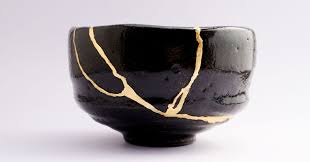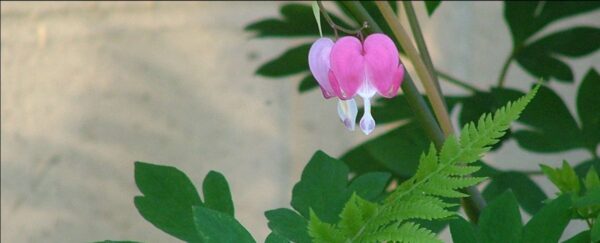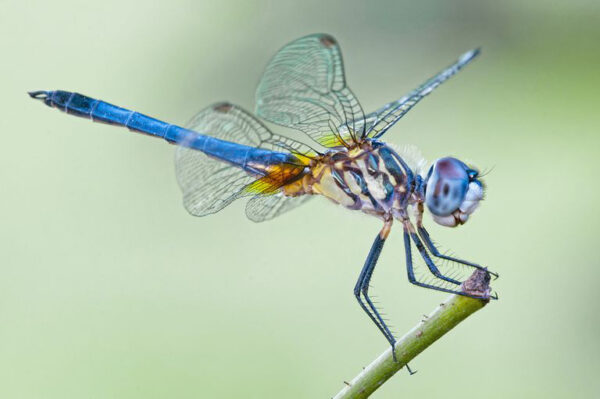Sweet gum.
I am not talking about Doublemint or Wrigleys but this sweet gum does have a juicy fruit! I am referring to Liquidamber styraciflua, common name American sweet gum. Its common name refers to the aromatic gum that oozes from wounds to the tree. I have always been intrigued by sweetgum as it has so many great attributes. Beautiful star-shaped deep green leaves turn shades of orange and yellow, even purple and red, in fall. The tree’s kaleidoscope of fall color reminds me of another fall favorite – Fothergilla. No wonder since they are both in the colorful witch hazel family. Sweetgum grows easily in full sun to part shade in moist, well-drained soil. And this is a tree that will be around for a while, living up to 150 years.
If there is fault to be found with this tree it could be the fruit, which is a round seed-filled spiky ball that drops in the fall. Many consider this messy and potentially painful (if the hard fruit is stepped on). In Michael Dirr’s entry for Sweetgum in his widely recognized Dirr’s Hardy Trees and Shrubs, it states “This lovely tree would be on every gardener’s wish list were it not for the woody, spiny, capsular, 1″ to 1 ½” diameter fruit, which abscise through fall and winter.” For this reason I have never used sweetgum but that is about to change.
I recently redesigned a client’s entire front landscape. We started from scratch and removed everything that had become overgrown and unhealthy. The design vision was for a simpler color palette with clean lines. Next up are the entry gardens at the head of the driveway. It’s not a large area but I would like to make it simple and dramatic to hint at the property’s other gardens. I am considering Liquidamber styraciflua ‘Slender Silhouette’. At only four feet wide this is a very narrow specimen which will work well in the location and, because it is so narrow, its fruit will drop in a smaller spot. Also, since it is at the end of a driveway, I’m not worried about people stepping on the spiky fruits. I think I will keep the tree’s underplanting simple. Since my client’s last name means “yellow”, maybe a carpet of Hakonechloa macra ‘All Gold’?
What do you think? Have you used ‘Slender Silhouette”?
Broken can be beautiful.
 Life is messy and sometimes things get broken. And since we live in a disposable society it seems easier to just discard what has been damaged. But I would encourage you to reconsider. Whatever might be broken, whether a plate or a promise, can often be restored.
Life is messy and sometimes things get broken. And since we live in a disposable society it seems easier to just discard what has been damaged. But I would encourage you to reconsider. Whatever might be broken, whether a plate or a promise, can often be restored.
I am especially taken with the idea of kintsugi. Kintsugi is a Japanese art form that takes broken ceramics and “glues” them back together with gold. The resulting piece, in the end, is actually MORE beautiful than its original. (see the picture above).
What about us, as gardeners? Can we take broken things and give them a second life? I was thinking that over and a few examples came to mind.
Broken branches don’t need to go in the compost pile they can become plant stakes. Use broken china mixed with cement, to create beautiful steppingstones into your garden. Broken mirrors can be placed under plants like hellebore to reveal their beautiful drooping flowers. Use a Sharpie on pieces of broken terra cotta pots to create plant markers. Broken (aka runned) nylons make wonderful and soft plant ties. These are especially great for tomato plants. They can also be used like a sling to hold heavier fruits and veggies like watermelon and squash. Broken keys or silverware can be made into mobiles for the garden. A rake head with no handle can be nailed to the shed wall and used as a tool hanger. Finally, a broken umbrella can be used to shade new transplants or remove the nylon covering and allow climbers to scramble up the individual ribs.
I hope I have encouraged you to see a new use in broken things. It is not only the green way to go it can make your garden a more beautiful place.
Thank you…and silk flowers.

This spring has been one for the records as far as I am concerned. Busier than ever. The kind of busy where you lie in bed at night and start to list the things you still have to do until you get so agitated that you get up and start doing them. Even if it’s 3AM. A very dear Aunt passed away in March and I am the Executor of her extensive estate which added quite a bit more to my to-do list. At times I felt completely overwhelmed as I sat in on Zoom meetings with her legal and financial team. Latin names and flowers I understand. Legal terms…not so much. Did you know a Qtip isn’t just for after a shower but is actually a type of trust?
A huge thank you to everyone who was patient with me this season. Thank you to those who extended grace when I was not as responsive to emails or phone calls. Thank you to those who forgave me when I forgot a plant or two. Thank you to those who offered me a cup of tea when I looked tired. And thanks also to a great team (shout out to Amy and Lauren) who had my back during the crazy times and even the times when I was cranky. Mea culpa.
For those of you who might have heard me present my talk on container gardening you might remember my discussion of silk flowers and how they should not be used in containers. You might also recall that I had an Aunt who used them anyway. Well, that was my Aunt Mary who passed away. She has quite a few nice silk flowers that I will not be using in containers – they need a good home. If you know of an organization that might want them, please send me an email.
Weeping and Bleeding.
Twenty years ago I was a young mother living in my first home. I had my own garden which I spent countless hours working in. It was not large, but it was full. I terraced an unused hillside to make room for more perennials. Carrying and placing large stones while my baby daughter slept in a carrier on my back. Over time that garden became my favorite place; days would start and end there. It was a beautiful backdrop for life – family reunions, birthday parties and the occasional date night.
Then everything changed. A pain, unexpected and deep, pushed its way into my life. It was a dark time. My garden, like a true friend, invited me in. There, in the quiet, with my hands in the dirt I noticed the rhythm of things. Life. Death. Life again. The barren and empty winter landscape gave way to the spring bloomers that had not been dead, but only waiting beneath the surface. I could see, in my garden, a greater plan. A Master Designer. And over time the pain healed.
I planted a bleeding heart in my garden and as I shoveled the last of the dirt into the hole I laid all the pain to rest. The chapter was closed.

Fifteen years later I was living in a new home. One with a bigger yard and more opportunities to garden. To me, it was Heaven. We moved in the fall so I did not have an opportunity to appreciate all the plants that were in the garden except to notice some beautiful trees, including a weeping birch.
Unfortunately, pain was aware of my new address and made an unscheduled visit. They say gardening is cheaper than therapy, so I gardened with abandon. Planted and pruned. Weeded and deadheaded. Tried to create beauty from ashes.
One day while working in the shade garden I noticed a plant emerging under the weeping birch. Can you guess? It was a bleeding heart. One of my favorite authors, Sydney Eddison, says that “Gardens are a form of autobiography.” My home’s previous owner had plants that were weeping and bleeding. Had he too experienced pain? Had he, like me, found balm in the garden?
These days I am planting more snowdrops; true, it is my logo and I love the toughness of a delicate flower that blooms through the snow, but it symbolizes hope.
What about you? Is your garden telling your story?
Dragonflies
Chances are you have seen a dragonfly or two since they live on every continent but Antarctica. And if you have never appreciated these flying marvels it’s time you took another look.
Dragonflies are in the order Odonata which means “toothed ones” and describes their serrated mandibles. They fly forward, backwards and sideways at speeds up to 30 MPH. They have four wings and each is able to move independently from the others which is why they are able to fly with such precision. Dragonflies have a head made up of two compound eyes which allows them to have nearly 360-degree vision.
In their larval stage, which can last up to two years, dragonflies live underwater. They eat worms, mosquito larvae, even small fish. Once they hatch they hunt their prey from the air. Dragonflies can adjust their flight to intercept prey with such accuracy that they are 95% effective. They only eat their prey while flying and if they are unable to fly they will die.

If you are still not impressed by the dragonfly consider one of its common names – Mosquito Hawk. One dragonfly can consume between 30-100 mosquitoes every day. In my book that makes them special. Rather than spraying poisons on our lawn and gardens to deal with flying pests we should encourage more dragonflies. Planting flowers that attract other insects will draw the dragonflies like an all-you-can-eat buffet draws a teenager. Dragonflies also love water gardens and water features.
Finally, dragonflies will not hurt humans. They do not bite or sting. They will not sew your lips shut so that you starve to death (something I remember hearing as a child). I have often had them land on me and if I am still, they eventually lower their wings. It has been said that if a dragonfly lands on you it is good luck. Sounds right to me.




Follow Us!